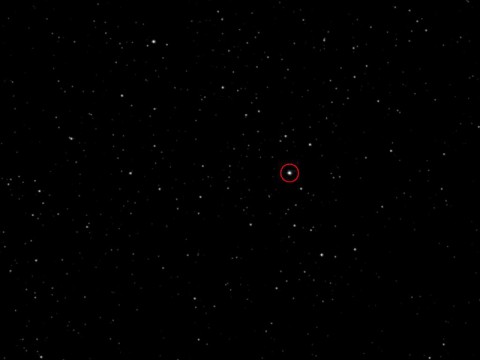Written by DC Agle
NASA’s Jet Propulsion Laboratory
 Pasadena, CA – Less than half the distance between Earth and moon separates Rosetta from its destination, comet 67P/Churyumov-Gerasimenko. The European Space Agency’s (ESA) spacecraft will become the first to orbit a comet and land a probe on its nucleus. It is beginning observations and sending science data back to Earth.
Pasadena, CA – Less than half the distance between Earth and moon separates Rosetta from its destination, comet 67P/Churyumov-Gerasimenko. The European Space Agency’s (ESA) spacecraft will become the first to orbit a comet and land a probe on its nucleus. It is beginning observations and sending science data back to Earth.
Recent images from Rosetta’s Onboard Scientific Imaging System (OSIRIS) indicate that the comet is currently at rest — no longer showing signs of an extended dust coma surrounding its nucleus.

“It will still take a few weeks before we can discern a detailed shape,” said OSIRIS Project Manager Carsten Güttler from the Max Planck Institute for Solar System Research, Gottigen, Germany. “But we are now no longer restricted to studying the brightness of the nucleus.”
Launched in March 2004, Rosetta was reactivated in January 2014 after a record 957 days in hibernation. Composed of an orbiter and lander, Rosetta’s objectives upon arrival at comet 67P/Churyumov-Gerasimenko in August are to study the celestial object up close in unprecedented detail, prepare for landing a probe on the comet’s nucleus in November, and track its changes as it sweeps past the sun.
Comets are time capsules containing primitive material left over from the epoch when the sun and its planets formed. Rosetta’s lander will obtain the first images taken from a comet’s surface and will provide the first analysis of a comet’s composition by drilling into the surface.
Rosetta also will be the first spacecraft to witness at close proximity how a comet changes as it is subjected to the increasing intensity of the sun’s radiation. Observations will help scientists learn more about the origin and evolution of our solar system and the role comets may have played in seeding Earth with water, and perhaps even life.
Rosetta is an ESA mission with contributions from its member states and NASA. Rosetta’s Philae lander is provided by a consortium led by the German Aerospace Center, Cologne; Max Planck Institute for Solar System Research, Gottingen; French National Space Agency, Paris; and the Italian Space Agency, Rome. JPL, a division of the California Institute of Technology, Pasadena, manages the U.S. participation in the Rosetta mission for NASA’s Science Mission Directorate in Washington.
For more information on the U.S. instruments aboard Rosetta, visit: http://rosetta.jpl.nasa.gov
More information about Rosetta is available at: http://www.esa.int/rosetta


